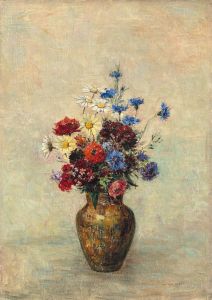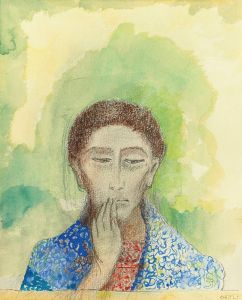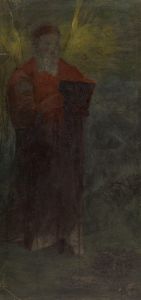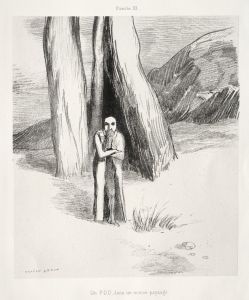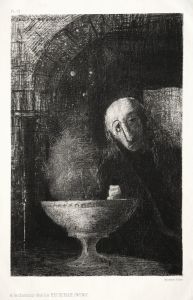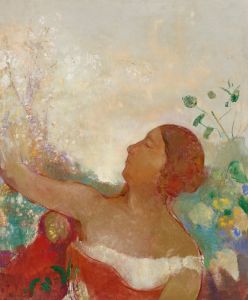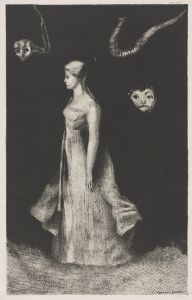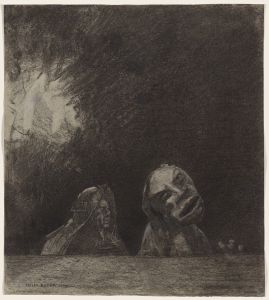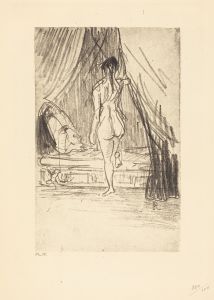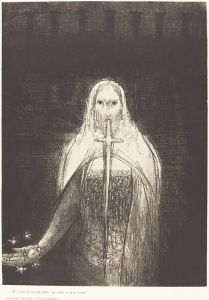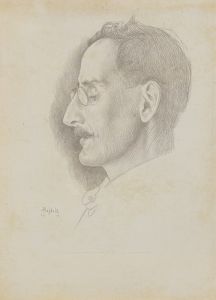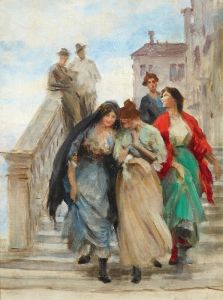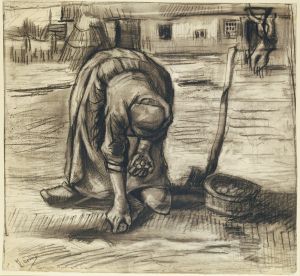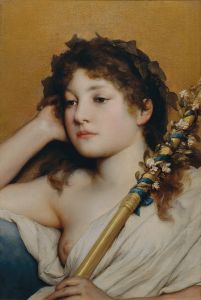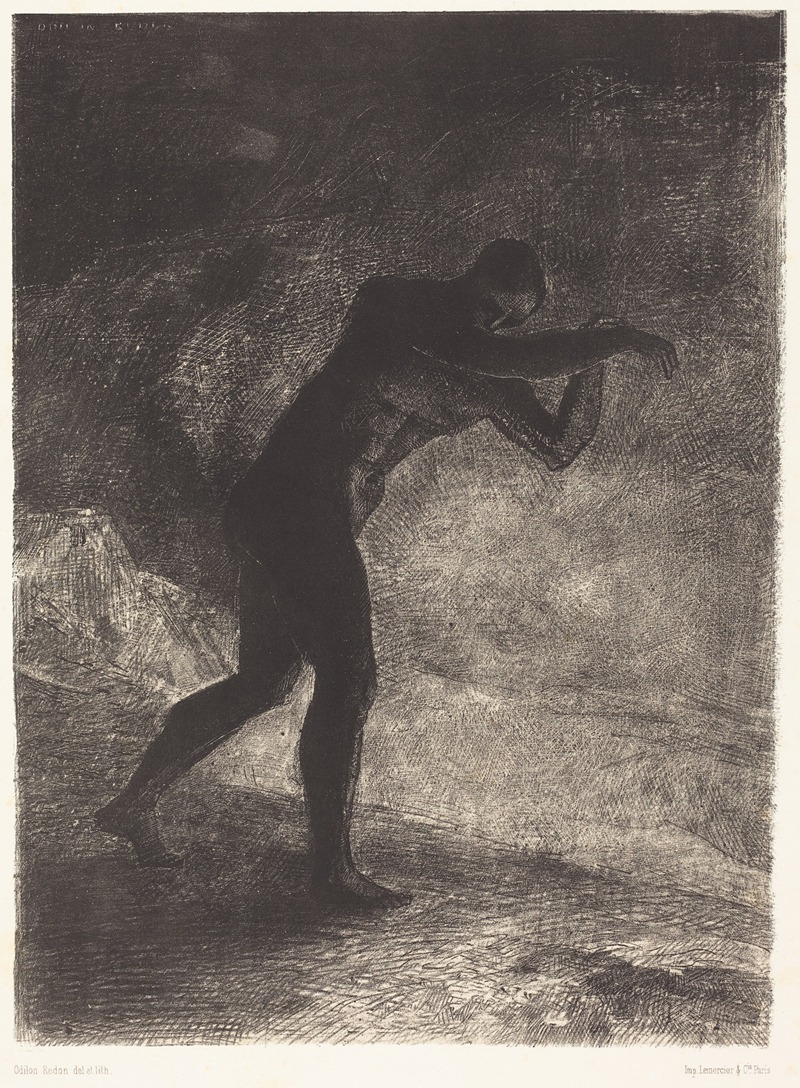
Et l’homme parut, interrogeant le sol d’ou il sort et qui l’attire, il se fraya la voie vers
A hand-painted replica of Odilon Redon’s masterpiece Et l’homme parut, interrogeant le sol d’ou il sort et qui l’attire, il se fraya la voie vers, meticulously crafted by professional artists to capture the true essence of the original. Each piece is created with museum-quality canvas and rare mineral pigments, carefully painted by experienced artists with delicate brushstrokes and rich, layered colors to perfectly recreate the texture of the original artwork. Unlike machine-printed reproductions, this hand-painted version brings the painting to life, infused with the artist’s emotions and skill in every stroke. Whether for personal collection or home decoration, it instantly elevates the artistic atmosphere of any space.
Odilon Redon was a French symbolist painter, printmaker, draughtsman, and pastellist, born on April 20, 1840, in Bordeaux, France. He is best known for his works that explore the boundaries between reality and imagination, often incorporating dreamlike and fantastical elements. Redon's art is characterized by its use of symbolism and a focus on the inner world of the mind, emotions, and spirituality.
"Et l’homme parut, interrogeant le sol d’où il sort et qui l’attire, il se fraya la voie vers" is one of Redon's works that reflects his interest in the mysterious and the metaphysical. The title, which translates to "And man appeared, questioning the ground from which he emerges and which attracts him, he made his way towards," suggests a narrative of emergence and exploration, themes that are common in Redon's oeuvre.
Redon's artistic career began in earnest in the 1870s, and he became known for his charcoal drawings and lithographs, which he referred to as his "noirs." These works often depicted fantastical creatures and dreamlike scenes, earning him a reputation as a precursor to the Surrealist movement. In the 1890s, Redon began to incorporate color into his work, using pastels and oils to create vibrant and ethereal compositions.
The painting in question likely belongs to Redon's later period, when he was increasingly interested in color and the expressive potential of painting. His use of color was often symbolic, intended to evoke emotions and convey spiritual or philosophical ideas. Redon's work was influenced by a variety of sources, including literature, music, and his own introspective nature.
Redon's art was well-received during his lifetime, and he exhibited with the Impressionists in 1886. However, he remained somewhat apart from the mainstream art movements of his time, pursuing his own unique vision. His work was admired by contemporaries such as Stéphane Mallarmé and Joris-Karl Huysmans, and it continues to be celebrated for its originality and depth.
While specific details about "Et l’homme parut, interrogeant le sol d’où il sort et qui l’attire, il se fraya la voie vers" are scarce, it can be appreciated within the broader context of Redon's exploration of the human condition and the mysteries of existence. His work often invites viewers to look beyond the surface and consider the deeper meanings and emotions that lie beneath.
Redon's legacy is significant, as he influenced later artists, particularly those associated with the Symbolist and Surrealist movements. His ability to blend reality with imagination and his focus on the inner world have made his work timeless and continue to resonate with audiences today. Redon passed away on July 6, 1916, in Paris, leaving behind a body of work that continues to inspire and intrigue.





